Download PDF
Download page Applying the Constant Monthly Baseflow Method.
Applying the Constant Monthly Baseflow Method
Last Modified: 2025-01-29 17:46:41.506
Overview
In this tutorial you will apply the HEC-HMS constant monthly baseflow method to a modeling application. Initial parameter estimates will be determined, and the model will be calibrated through trial and error. HEC-HMS version 4.11 beta 3 was used to created this tutorial.
Software Version
HEC-HMS version 4.13-beta.4 was used to create this example. You can open the example project with HEC-HMS 4.13 or a newer version.
Project Files
Download the Initial project files here:
Note: The initial project file is the same for the Constant Monthly, Recession, and Linear Reservoir Baseflow tutorials. If you are completing all three tutorials, the files only need to be downloaded once.
Initial Parameter Estimates
- Open the Punxsutawney project and then open the Mahoning Creek Const Monthly Basin Model.
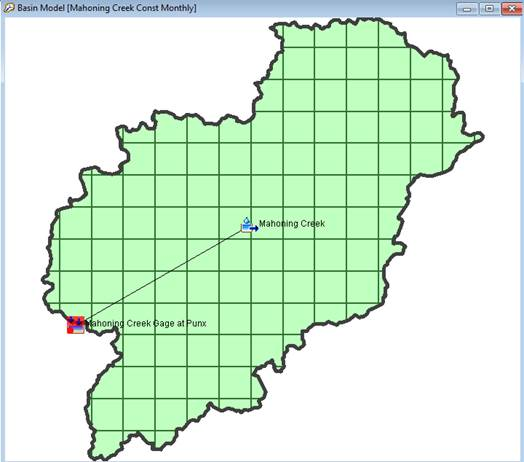
- Select the Sept2018_ConstMonthly simulation run from the Compute toolbar,
 . Press the Compute All Elements button,
. Press the Compute All Elements button,  , to run the simulation.
, to run the simulation. - View the result graph and summary table for the Mahoning Creek subbasin element. Notice the computed flow does a good job matching the peak observed flow, but the interflow and baseflow portions of the computed hydrograph do not match observed flow. The summary table shows a large difference in observed and computed runoff volume (4.40 inches vs. 2.79 inches). Leave the summary table and plot open so you can see results change as you add baseflow and modify baseflow parameters.
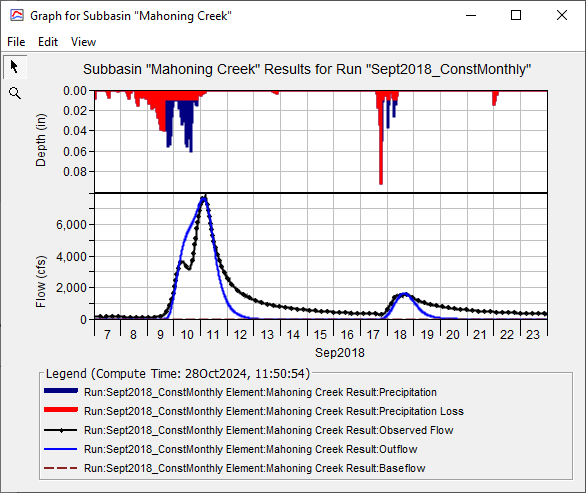
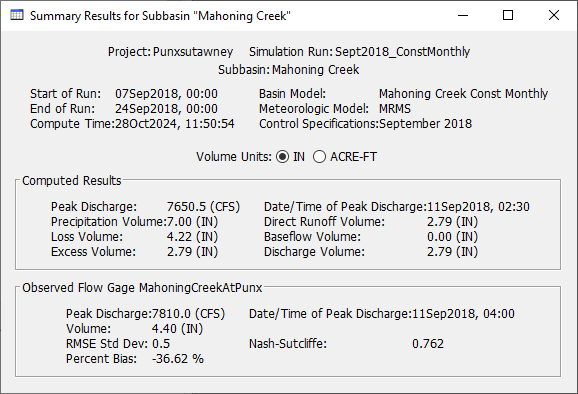
- Open the Component Editor for the Mahoning Creek subbasin element. Change the Baseflow Method from None to Constant Monthly.

- Go to the Baseflow tab to enter Constant Monthly parameters. Even though the simulation only simulates a period in the month of September, you must define a constant baseflow rate for each month in the year. Enter a constant flow rate of 500 cfs for September, enter a flow rate of 0 cfs for the other 11 months.
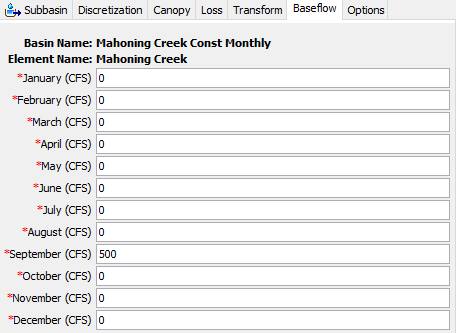
- Re-run the simulation and look at the results plot and summary table. Notice baseflow in the plot and how the addition of baseflow to direct runoff results in an increase in the simulated flow. The total runoff volume increased as well. The direct runoff is 2.79 inches and the baseflow is 2.01 inches. A constant baseflow rate of 500 cfs overestimates baseflow at the beginning of the simulation but is a better approximation of baseflow after the first and second events.
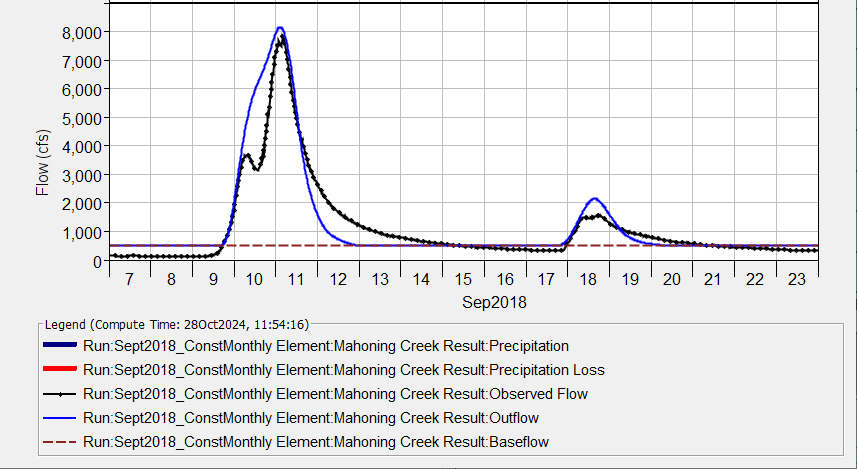

Calibrate the Model
The constant monthly baseflow method is limited in application. As you can see from the results of the simulation, only one constant flow rate will be used as the baseflow response for the entire simulation. It will not be possible to match the baseflow and recession at the beginning of the simulation and after the first and second events. Choose a September constant flow rate that you think is appropriate. Rerun the simulation and evaluate results.
Project Files
Download the Final project files here:
Note: The final project file is the same for the Constant Monthly, Recession, and Linear Reservoir Baseflow tutorials. If you are completing all three tutorials, the files only need to be downloaded once.
Questions:
Question 1: Can you model both interflow and baseflow with the Constant Monthly baseflow method?
No, the constant monthly baseflow method can only model the longer responding baseflow portion of the runoff hydrograph. For those watersheds where interflow is a large portion of the hydrograph, interflow would have to be included in direct runoff. This would require loss rates and unit hydrograph parameters to be adjusted accordingly.
Question 2: What type of applications would you use the Constant Monthly baseflow method?
As shown in the Punxsutawney model application, the constant monthly baseflow method is not able to model both interflow and baseflow. The constant monthly baseflow method could be used for those modeling applications where interflow is not a large contributor to total runoff. This baseflow method is not designed to perform well for individual flood events during a continuous simulation. You can modify model parameters for one hydrograph peak, but it is not possible to accurately simulate recession for multiple flood hydrographs in a continuous simulation. Therefore, this method should be limited to event simulation.
Continue to Applying the Linear Reservoir Baseflow Method
